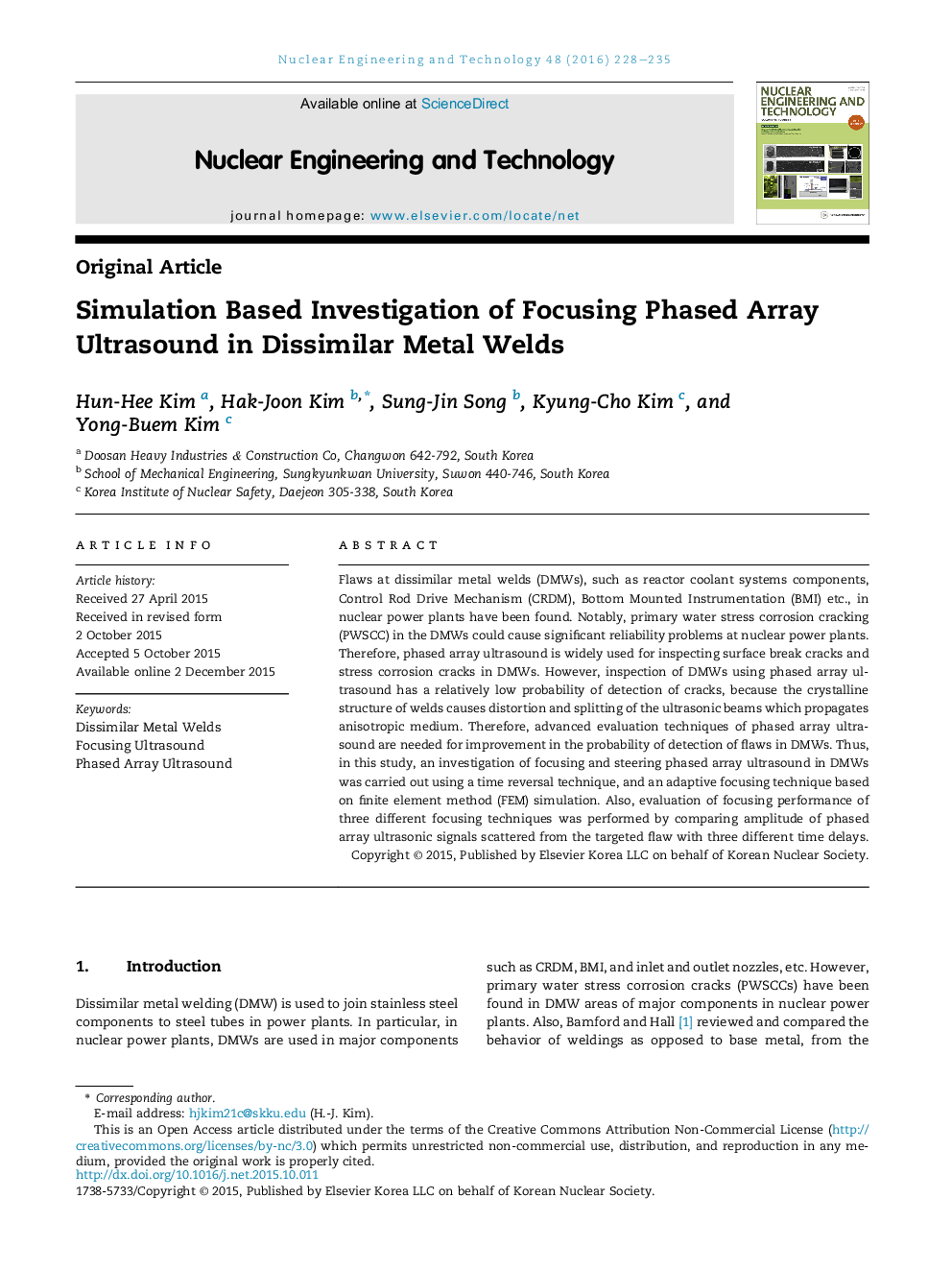| Article ID | Journal | Published Year | Pages | File Type |
|---|---|---|---|---|
| 1740017 | Nuclear Engineering and Technology | 2016 | 8 Pages |
Flaws at dissimilar metal welds (DMWs), such as reactor coolant systems components, Control Rod Drive Mechanism (CRDM), Bottom Mounted Instrumentation (BMI) etc., in nuclear power plants have been found. Notably, primary water stress corrosion cracking (PWSCC) in the DMWs could cause significant reliability problems at nuclear power plants. Therefore, phased array ultrasound is widely used for inspecting surface break cracks and stress corrosion cracks in DMWs. However, inspection of DMWs using phased array ultrasound has a relatively low probability of detection of cracks, because the crystalline structure of welds causes distortion and splitting of the ultrasonic beams which propagates anisotropic medium. Therefore, advanced evaluation techniques of phased array ultrasound are needed for improvement in the probability of detection of flaws in DMWs. Thus, in this study, an investigation of focusing and steering phased array ultrasound in DMWs was carried out using a time reversal technique, and an adaptive focusing technique based on finite element method (FEM) simulation. Also, evaluation of focusing performance of three different focusing techniques was performed by comparing amplitude of phased array ultrasonic signals scattered from the targeted flaw with three different time delays.
